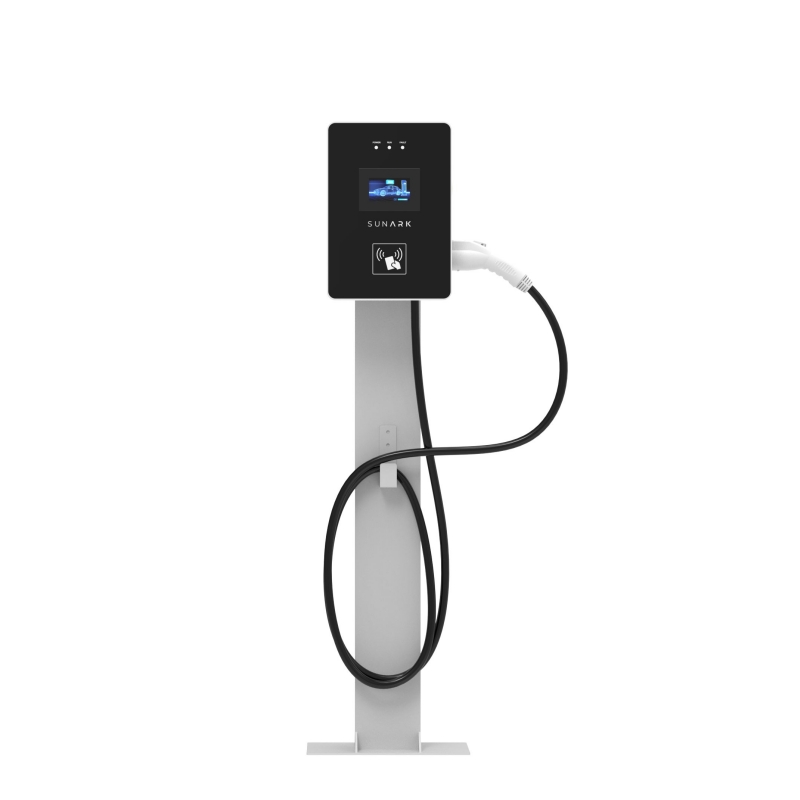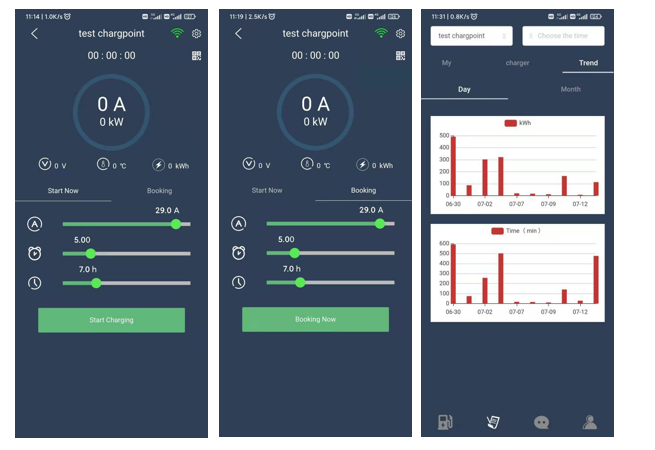An electric EV charger is a device used to supply electric energy to recharge the battery of an electric vehicle (EV). There are various types of EV chargers available, but the most common ones are AC (alternating current) chargers and DC (direct current) chargers.
Standard:
SAE Standard / IEC StandardConnector type:
Type 1 / Type 2Connector Mechanical Operating Life:
≥10000 times
One of the biggest concerns for electric vehicle (EV) owners is knowing when and how to charge their vehicle. It makes sense: The average American has spent their life driving around in gas-powered cars, filling up at one of the hundreds of thousands of gas stations as the gauge creeps towards empty. Charging one’s EV takes a little more planning, but with the growing demand and incentives for alternatives to gas-powered cars, Level 2 public EV charging stations are becoming a more common sight.
So whether you’re the owner of an EV or looking to add a public EV charging station to your commercial property, here are just a few things you should know about how an EV charger works.
What Is an EV Charger?
Both electric vehicles and plug-in hybrid electric vehicles require an EV charger to keep the battery full, just like any chargeable device or electronic.
How Does EV Charging Work?
At its most basic, an EV charger pulls an electrical current from either a 240v outlet or the grid it’s hardwired to and delivers that electricity to the vehicle, just like any other appliance or device you charge by plugging into the wall.

Here are some advantages of AC EV chargers:
Compatibility: AC chargers are compatible with almost all electric vehicles on the market because they use the same AC power supply as residential and commercial buildings. This makes them widely accessible and convenient for EV owners.
Cost-effective: AC chargers are generally less expensive to install compared to DC chargers. They utilize the existing electrical infrastructure, such as standard electrical outlets, making them more cost-effective for both residential and commercial charging installations.
Flexibility: AC chargers offer flexibility in terms of charging power. They can be installed with different power levels, ranging from 3.7 kW to 22 kW or even higher, depending on the specific charging station. This allows EV owners to choose the charging speed that suits their needs and electrical capacity.
Slow-charging option: AC chargers are commonly used for slow charging, which is suitable for overnight charging at home or long-duration charging at workplaces. Slow charging is typically sufficient for daily commuting, ensuring the vehicle's battery is topped up each day.
Widely deployed: AC charging infrastructure is more widely available and established than DC charging infrastructure. Public charging stations, parking lots, shopping malls, and hotels often have AC chargers installed, making them more accessible for EV drivers, especially for shorter charging sessions.

Here's how a typical DC charging station works:
Connection: The EV driver connects their vehicle to the charging station using a DC charging cable. These cables are usually equipped with standardized connectors such as CHAdeMO, CCS (Combined Charging System), or Tesla Supercharger connector, depending on the charging network and the EV's compatibility.
Power Conversion: The charging station contains power electronics that convert the incoming AC power from the electrical grid to DC power. This involves rectifying the AC power and then regulating it to provide a stable and controlled DC output.
Communication: The charging station communicates with the EV to establish a connection and exchange necessary information. This information exchange usually includes data such as the maximum charging rate supported by the EV, battery capacity, and current battery state.
Charging Protocol: The charger and the EV communicate to determine the appropriate charging protocol. The charging protocols, such as CHAdeMO or CCS, define the communication standards and charging methods used during the charging process. These protocols ensure compatibility between the charger and the EV.
Charging Process: Once the charger and the EV establish a connection and agree on the charging protocol, the actual charging process begins. The charger supplies DC power to the EV's battery, bypassing the onboard charger present in the vehicle. DC chargers can provide high power levels, typically ranging from 50 kW to over 350 kW, allowing for rapid charging.
Safety and Monitoring: The charging station continuously monitors the charging process to ensure safety and protect the battery from overcharging or overheating. Temperature sensors within the charging cable or the vehicle may also provide feedback to control the charging rate.
Charging Completion: Once the EV's battery reaches a sufficient charge level or the charging session is manually stopped, the charger ceases the flow of power. The charging station may provide information and notifications to the EV driver about the charging session's duration, energy delivered, and battery status.

How does the monitoring APP work?
Centralized Monitor System: EV chargers can be connected to a centralized monitoring system that allows operators or administrators to remotely monitor the charging status, energy consumption, and any faults or abnormalities of the chargers.
Mobile Applications: Many EV charger manufacturers provide mobile applications that allow users to monitor and control the charging process.
Website: Some EV charging networks offer web portals where users can log in to monitor their charging sessions, view charging history, and access other relevant information.
RFID or NFC Card: EV chargers can be equipped with RFID (Radio-Frequency Identification) or NFC (Near Field Communication) card readers.
Display Screens: Many EV chargers have built-in display screens that show real-time charging information, such as charging power, charging time
It's worth noting that DC fast chargers, also known as Level 3 chargers, have their own advantages, such as significantly faster charging speeds and compatibility with certain high-capacity EVs. However, AC EV chargers remain a popular and practical charging solution for most EV owners in various settings.
FAQs:
Q1: Do you support OEM/ODM?
A:Definitely, OEM&ODM service is supported with a certain quantity,including customize logo,package and label;
Q2: What's the production time?
A: The production time is normally 15 working days. but we will always prepare some stocks for popular models.
Q3: Can you provide DDP service?
A:Yes, if you are a personal customer and don't want to deal with the customs, we can provide DDP service to your address.
Q4: What about the warranty and how to claim?
A: Warranty period are 5 years since you receive the product, our professional after-sales team will deal with all warranty issues.